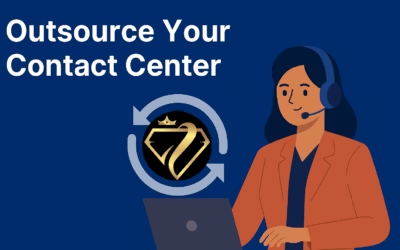Looking to optimize your customer service and drive remarkable business growth? You’re in the right place. Modern businesses that prioritize exceptional customer service experience 60% higher profits than their competitors, making service optimization essential for sustainable success.
With customer expectations evolving rapidly across the UK, US, and Canada, companies must adapt their service strategies to meet these changing demands. This comprehensive guide reveals 10 actionable methods to transform your customer support operations and create lasting competitive advantages.
Why Customer Service Excellence Drives Business Success
Exceptional customer service has become the primary differentiator in today’s competitive marketplace. Research shows that 86% of buyers willingly pay more for superior customer experiences, while companies with strong service reputations enjoy:
- Higher customer retention rates (up to 95% compared to industry averages)
- Increased revenue growth through positive word-of-mouth marketing
- Reduced marketing costs as satisfied customers become brand advocates
- Better employee satisfaction in customer-focused organizations
Understanding these benefits helps prioritize service improvements as strategic investments rather than operational expenses.

Build Multi-Channel Support Systems for Maximum Reach
Expand Your Service Channels Strategically
Today’s consumers expect seamless support across multiple touchpoints. Successful multi-channel strategies include:
Primary Communication Channels:
- Telephone support for complex issues requiring detailed discussion
- Live chat integration for instant response capabilities
- Email support for documented communication preferences
- Social media monitoring for public engagement opportunities
Emerging Digital Channels:
- WhatsApp Business for personal messaging preferences
- Video support for technical demonstrations
- Community forums for peer-to-peer assistance
- Mobile app integration for on-the-go support
Implementation Best Practices
Focus resources on channels where your target audience actively engages. Survey existing customers to understand their communication preferences, then gradually expand your presence based on demand and capacity.
Ensure consistent service quality across all platforms by developing standardized response protocols and training materials. Customers should receive equally professional assistance regardless of their chosen communication method.
Harness Technology to Streamline Service Operations
Artificial Intelligence Integration
Smart technology implementations can dramatically improve service efficiency without replacing human connections:
Chatbot Deployment: Deploy AI-powered chatbots to handle routine inquiries like order tracking, account information, and frequently asked questions. This frees human agents to focus on complex problem-solving.
Predictive Analytics: Utilize customer data analysis to identify potential issues before they escalate, enabling proactive outreach and problem prevention.
Automated Routing Systems: Implement intelligent ticket distribution that matches customer needs with agent expertise, reducing transfer rates and improving resolution times.
Essential Technology Stack Components
Build your service infrastructure around these core technologies:
- Customer Relationship Management (CRM) systems for centralized data management
- Help desk software with integrated ticketing capabilities
- Performance analytics tools for continuous improvement tracking
- Knowledge management platforms for agent resource access
- Quality assurance software for service monitoring
Invest in Comprehensive Agent Training Programs
Core Training Elements for Service Excellence
Exceptional customer service begins with well-trained representatives who understand both technical requirements and emotional intelligence principles.
Product Knowledge Mastery: Develop extensive training curricula covering all products, services, and common technical issues. Regular updates ensure agents stay current with new features and changes.
Communication Skills Development: Focus training on active listening techniques, empathy demonstration, and clear explanation abilities. Role-playing exercises help agents practice challenging scenarios safely.
Technology Proficiency: Ensure comfortable familiarity with all systems, tools, and platforms used in daily operations through hands-on training sessions.
Ongoing Development Strategies
Create continuous learning environments through monthly skills workshops, peer mentoring programs, and cross-departmental collaboration opportunities. Regular performance feedback sessions help identify improvement areas while recognizing exceptional achievements.
Personalize Customer Interactions for Enhanced Satisfaction
Data-Driven Personalization Approaches
Leverage customer information strategically to create tailored service experiences that demonstrate genuine care and attention to individual needs.
Customer History Integration: Train agents to review interaction histories, purchase patterns, and preference data before engaging with customers. This preparation enables more relevant and helpful assistance.
Behavioral Segmentation: Group customers based on value, engagement patterns, and communication preferences to deliver appropriate service levels and channel options.
Preference Recognition: Document and utilize individual customer preferences for communication timing, channels, and resolution approaches in future interactions.
Privacy and Trust Considerations
Implement personalization respectfully by obtaining proper permissions, explaining data usage benefits, and providing customers control over their information preferences. Transparency builds trust while enabling better service delivery.

Develop Comprehensive Self-Service Resources
Essential Self-Help Components
Empower customers to resolve common issues independently through well-designed self-service options that reduce wait times while improving satisfaction.
Knowledge Base Development: Create searchable databases containing detailed answers to frequently asked questions, troubleshooting guides, and step-by-step instructions for common processes.
Video Tutorial Libraries: Develop visual learning resources that demonstrate complex procedures, product features, and problem-solving techniques through engaging multimedia content.
Interactive Tools: Implement decision trees, diagnostic tools, and guided troubleshooting systems that adapt to specific customer situations and needs.
Content Quality Standards
Maintain high-quality self-service resources through regular content audits, customer feedback integration, and continuous updates based on emerging questions and issues.
Use clear, jargon-free language that speaks directly to your target audience’s knowledge level. Include visual aids, screenshots, and practical examples that enhance understanding and usability.
Implement Proactive Customer Support Strategies
Anticipating Customer Needs
Transform your service approach from reactive problem-solving to proactive issue prevention through strategic monitoring and customer outreach initiatives.
System Monitoring Protocols: Establish comprehensive monitoring systems that detect service disruptions, performance issues, or potential problems before customers experience negative impacts.
Behavioral Pattern Analysis: Utilize customer usage data to identify individuals who might benefit from additional support, training resources, or product recommendations.
Follow-Up Communication: Develop systematic check-in procedures after significant purchases, service interactions, or problem resolutions to ensure ongoing satisfaction and identify additional needs.
Proactive Outreach Benefits
Proactive support demonstrates exceptional care while preventing small issues from escalating into major problems. This approach builds stronger customer relationships while reducing overall support volume and costs.
Measure Performance Through Strategic Analytics
Key Performance Indicators for Success
Track meaningful metrics that provide actionable insights into your service optimization efforts and customer satisfaction levels.
Customer Satisfaction Scores (CSAT): Measure immediate satisfaction with specific interactions to identify successful practices and improvement opportunities.
Net Promoter Scores (NPS): Assess customer loyalty and likelihood to recommend your business to others, providing insights into long-term relationship health.
First Contact Resolution Rates: Track the percentage of issues resolved during initial customer interactions, indicating agent effectiveness and system efficiency.
Response Time Analysis: Monitor speed of response across all channels to ensure consistent service delivery that meets customer expectations.
Data-Driven Improvement Processes
Use performance analytics to guide strategic decisions about training needs, resource allocation, and process improvements. Regular analysis reveals trends and patterns that inform optimization priorities.

Foster Customer-Centric Organizational Culture
Building Service-Focused Teams
Create organizational environments where exceptional customer service becomes embedded in daily operations and decision-making processes across all departments.
Leadership Commitment: Demonstrate visible commitment to customer service excellence through resource allocation, recognition programs, and strategic priority communication.
Employee Empowerment: Provide front-line staff with appropriate authority to resolve customer issues efficiently without excessive approval processes or bureaucratic delays.
Cross-Departmental Alignment: Ensure all team members understand their roles in customer experience delivery and maintain consistent service standards throughout the organization.
Cultural Development Strategies
Implement recognition programs that celebrate exceptional service achievements, share customer success stories throughout the organization, and provide advancement opportunities for service-focused employees.
Stay Current with Industry Trends and Innovations
Emerging Service Technologies
Prepare for future customer service evolution by monitoring technological developments and changing customer preferences across different markets and demographics.
Voice Technology Integration: Explore opportunities to incorporate smart speakers and voice assistants into your customer service channels as adoption rates increase.
Visual Support Solutions: Consider video chat capabilities and screen-sharing tools for complex technical support situations that benefit from visual demonstrations.
Messaging Platform Expansion: Evaluate popular messaging applications and social platforms where your target audience actively communicates and engages with brands.
Market-Specific Considerations
Understand regional preferences and cultural expectations across the UK, US, and Canadian markets to tailor your service approaches appropriately for different customer segments.

Avoid Common Service Optimization Pitfalls
Technology Balance Considerations
While technological solutions improve efficiency, maintain human connections for complex emotional situations and high-value customer interactions that require personal attention and empathy.
Team Input Integration
Leverage insights from customer-facing employees who understand common challenges, customer preferences, and practical improvement opportunities based on daily interactions.
Quality Over Speed Focus
Prioritize accurate, helpful responses over rapid but incomplete solutions that create additional customer frustration and repeat contact requirements.
Conclusion: Transform Your Customer Service Today
Ready to optimize your customer service and drive exceptional business growth? Start implementing these proven strategies systematically to create remarkable customer experiences that build loyalty and generate sustainable competitive advantages.
Begin with a comprehensive assessment of your current service performance, customer preferences, and organizational capabilities. Then prioritize improvements based on potential impact and available resources.
Remember that service optimization requires ongoing commitment and continuous improvement efforts. Companies that consistently invest in customer service excellence will build stronger relationships, increase retention rates, and achieve remarkable business success.
Take action today: Choose two strategies from this guide and begin implementation within the next 30 days. Your customers and business results will reflect the positive changes immediately.





0 Comments